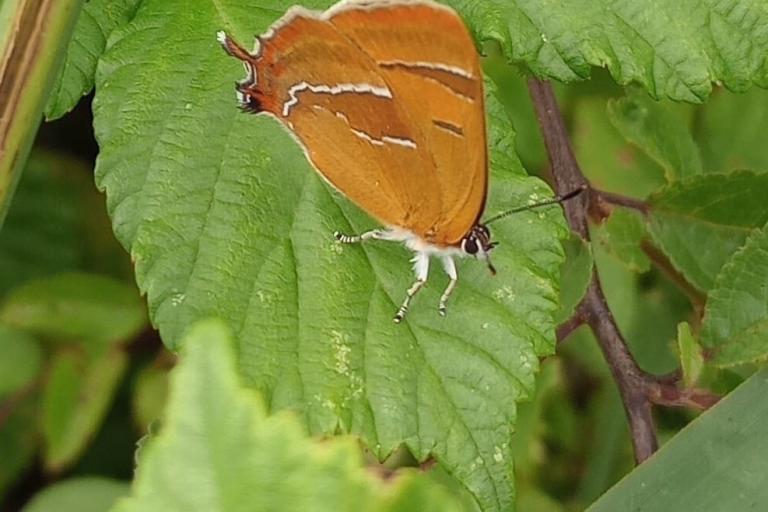During a week-long internship with us, Harveet Purewal, a Oxford University student investigated the distribution patterns of the Brown hairstreak butterfly (Thecla betulae) and its potential response to climate change. The findings shed light on the butterfly’s remarkable adaptability and have implications for conservation efforts.
The Brown hairstreak, a delicate and elusive species, has long fascinated entomologists. Its distinctive orange-brown wings adorned with a subtle white streak make it a captivating subject for study. However, recent shifts in its distribution have raised questions about the factors driving these changes.

Mapping the Journey: A Micro-Internship at TVERC
As part of the micro-internship, Harveet, delved into TVERC’s extensive dataset, which included egg and larval recordings spanning from 2001 to 2024. Armed with this valuable information, he meticulously plotted distribution maps using ArcGIS software. The results revealed a compelling story of movement and adaptation.
Northward and Southward Expansion
The Brown hairstreak’s range has expanded significantly over the past two decades. Initially clustered around Otmoor and Asham Meads nature reserve in 2001, the butterfly has now spread both north and south across Oxfordshire. Surprisingly, it has ventured beyond the city centre of Oxford itself, colonising green spaces throughout the region.
Climate Change as a Driving Force
This expansion might be attributed to climate. Average temperatures in Oxfordshire have risen by 0.81°C since 2001, inching closer to the butterfly’s optimal air temperature of 20°C. As warmer conditions prevail, the Brown hairstreak may find new habitats suitable for egg laying. Notably, Gavray meadows in Bicester emerge as a potential hotspot for future colonisation.
Conservation Implications
These findings underscore the importance of monitoring and protecting the Brown hairstreak. Increased vigilance and regular monitoring schemes are crucial to safeguarding its population. As the butterfly continues to adapt to changing environmental conditions, conservation efforts must keep pace.